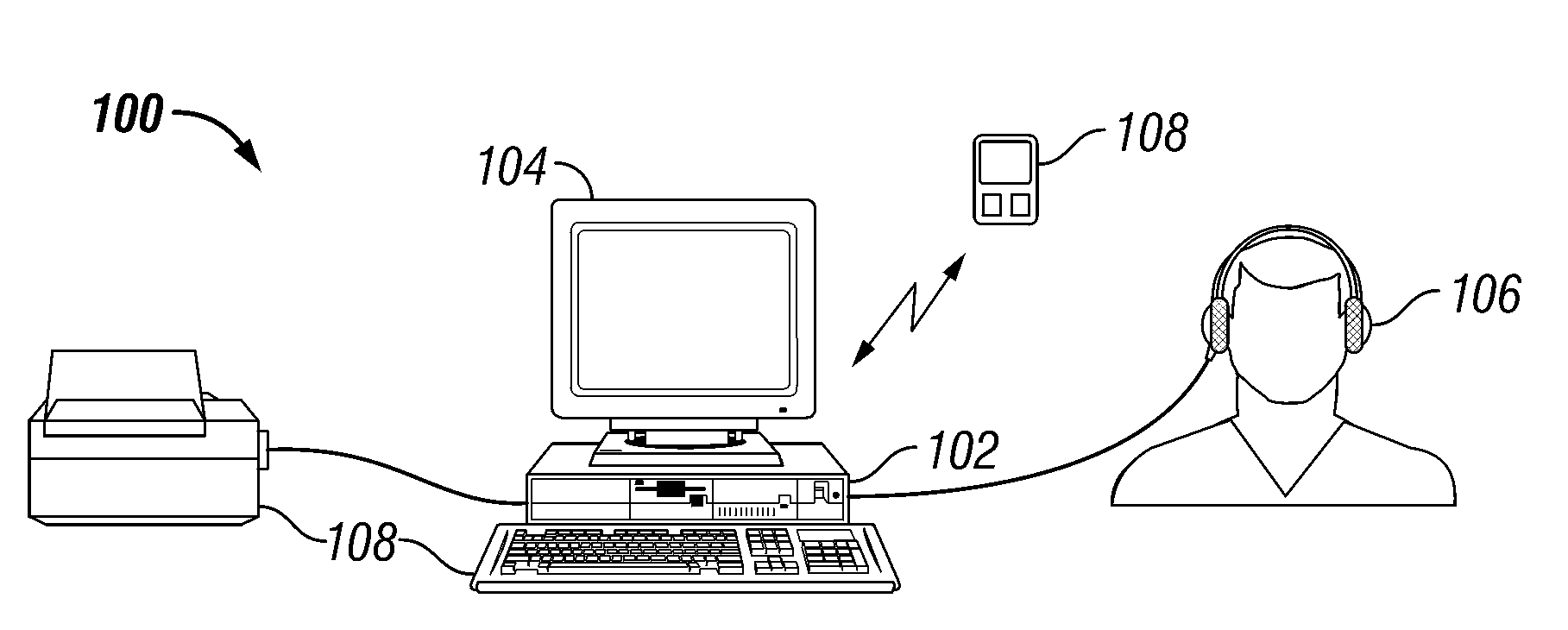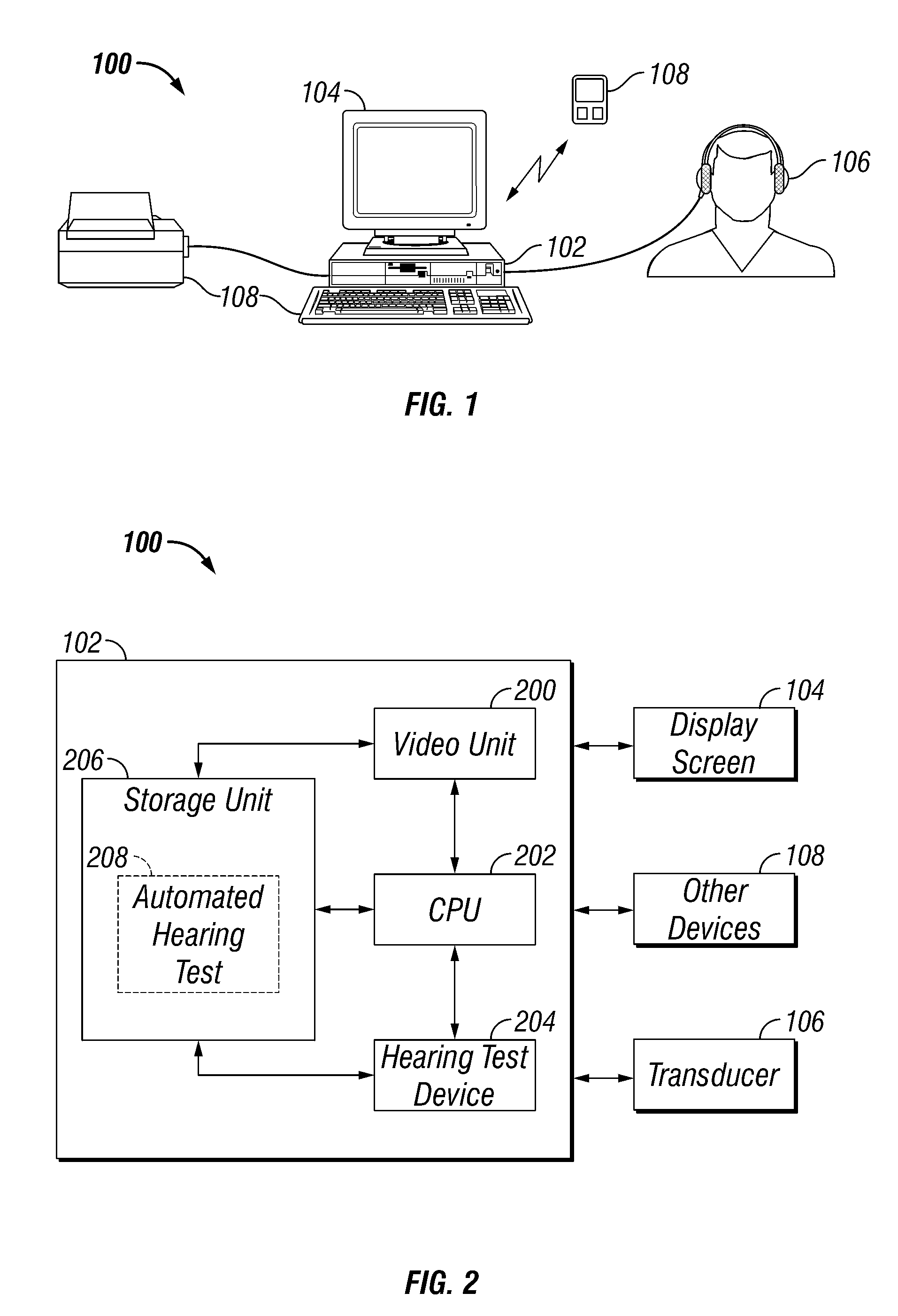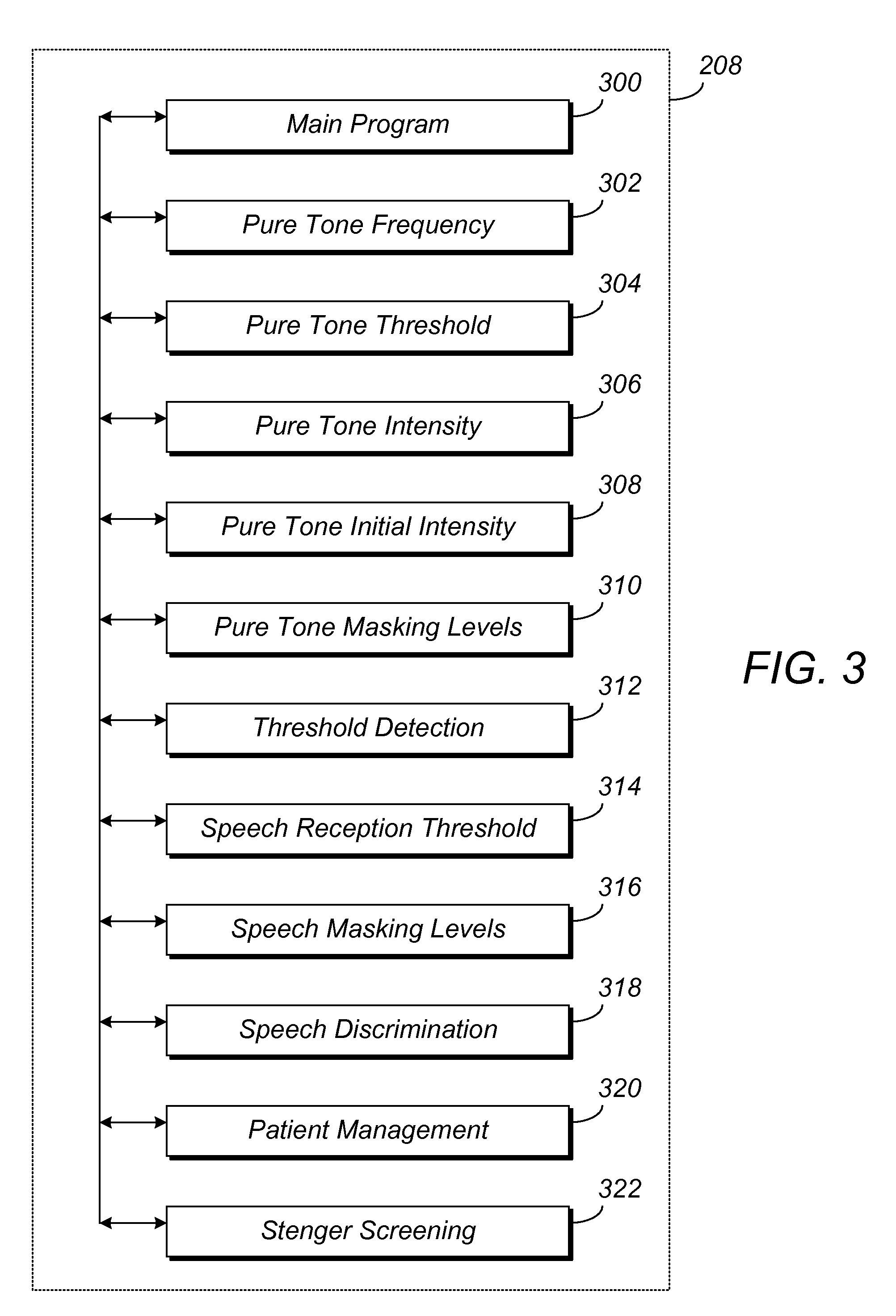Stenger screening in automated diagnostic hearing test
a technology of automated diagnostic hearing test and stenger screening, applied in the field of stenger screening, can solve the problems of significant reduction in quality of life, impaired relationships, reduced employment access, etc., and achieve the effect of quick and accurate testing of his own hearing
- Summary
- Abstract
- Description
- Claims
- Application Information
AI Technical Summary
Benefits of technology
Problems solved by technology
Method used
Image
Examples
Embodiment Construction
[0027]Following is a detailed description of the invention with reference to the drawings wherein reference numerals for the same or similar elements are carried forward.
[0028]As mentioned above, the present invention is directed to a method and system for automated testing of a patient's hearing. The term “automated testing” as used herein refers to testing that is performed primarily by a computer, as opposed to testing that is performed primarily by a hearing health professional. The automated hearing test allows the patient to test his own hearing with minimal or no assistance from an audiologist or other hearing health professional. Typically, an operator, such as the hearing health professional or a trained assistant, helps the patient with the initial set up (e.g., seating, putting on the headset, demonstrating button usage, etc.) and explains how the test works. Thereafter, the automated hearing test prompts and instructs the patient for all inputs and responses needed. If a...
PUM
 Login to View More
Login to View More Abstract
Description
Claims
Application Information
 Login to View More
Login to View More - R&D
- Intellectual Property
- Life Sciences
- Materials
- Tech Scout
- Unparalleled Data Quality
- Higher Quality Content
- 60% Fewer Hallucinations
Browse by: Latest US Patents, China's latest patents, Technical Efficacy Thesaurus, Application Domain, Technology Topic, Popular Technical Reports.
© 2025 PatSnap. All rights reserved.Legal|Privacy policy|Modern Slavery Act Transparency Statement|Sitemap|About US| Contact US: help@patsnap.com



